200以上 club foot treatment age 770708-Club foot treatment age
In the last decade, the Ponseti method has become increasingly popular and is reportedly effective for treating clubfoot in children up to 9 years of age Although the principles of the Ponseti technique are simple, the healthcare provider must have a thorough understanding of the deformity and be highly skilled with regard to manipulation and application of plaster castsClubfoot or CTEV (Congenital Talipes Equinovarus) is a common condition, present from the early stages of pregnancy, that causes the lower leg, ankle and foot to be twisted inwards from the normal position There are several theories, but the exact reason why this occurs in unknown Boys are more commonly affected by clubfoot than girlsTreatment will depend on your child's symptoms, age, and general health It will also depend on how severe the condition is The goal of treatment is to straighten the foot so that it can grow and develop more normally Without treatment, your child would have trouble walking

Clubfoot Treatment With A Boots And Bar Orthosis
Club foot treatment age
Club foot treatment age-Clubfoot Clubfoot is a deformity in which an infant's foot is turned inward, often so severely that the bottom of the foot faces sideways or even upward Approximately one infant in every 1,000 live births will have clubfoot, making it one of the more common congenital (present atTreating club foot Treatment for club foot usually starts within 1 to 2 weeks of your baby being born The main treatment, called the Ponseti method, involves gently manipulating and stretching your baby's foot into a better position




To Parents Of Children Born With Clubfeet University Of Iowa Stead Family Children S Hospital
Idiopathic clubfoot tends towards conservative treatment This study reviews the outcomes of treatment in our practice using the quantitative clubfoot assessment of the deformity (QCAD) Methods Thirty patients (38 cases of clubfoot) with congenital idiopathic clubfoot treated at Sarawak General Hospital were followedup for a mean of 36 yearsClubfoot Research Clubfoot is a congenital abnormality that affects 1 in every 1,000 newborns Children born with clubfoot have an inward curved forefoot, high arches, and an inverted heel with a downward pointing ankle Clubfoot structural malformations delay physical mobility and activity in diagnosed children Over the course of six to eight weeks, clubfoot may be corrected without surgery Casting is more successful for those with mild clubfoot and
Stage 1 Stretching and Casting Timeline 4 to 6 weeks During this first stage of treatment, an OIC clubfoot specialist will gently manipulate your baby's foot through stretching into the right position A longleg cast that spans from the toes to the thigh17 patients ages 19 to 9 years of age 16/17 corrected, mean time in casts 39 months 5 patients relapsed requiring posterior release Spiegel, D a, Shrestha, O P, Sitoula, P, Rajbhandary, T, Bijukachhe, B, & Banskota, A K (09) Ponseti method for untreated idiopathic clubfeet in Nepalese patients from 1 to 6 years of age Turned toward my face I was fortunate to have a surgeon who enabled me to walk after 12 surgeries 3 mos12 yrs I wore "regular shoes" by 14, after adapted ones I swell also, used to wrap each overnight in an Ace bandage to reduce it or before an important eventfinally gave that up Around age 40, I had molds of my feet made by a podiatrist
Because the study group comprised children over the age of 15 years old, first step was to decide if the rigidity of the feet allows the conservative treatment In some of the cases, where it was possible, a casting device was applied in the pretreatment phase; Seventytwo patients (93 feet) underwent surgical treatment for the late effects of clubfoot deformity at an average age of 13 years (range 9 to 19 years) All patients had been treated at a young age with serial casting, and most had at least one previous surgery on the affected foot or feetWhen the foot is fully corrected, your child has to wear special boots attached to a bar (brace) to hold their feet in the most effective position The boots are worn for 23 hours a day for the first 3 months and then just at night and nap times for up to the age of 4/5years Regular footwear may then be worn at all other times




How Parents And The Internet Transformed Clubfoot Treatment Shots Health News Npr
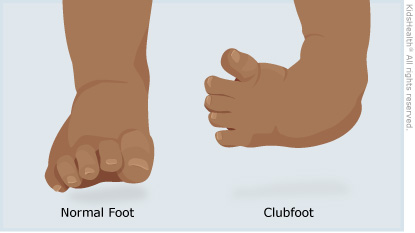



Clubfoot For Parents Nemours Kidshealth
Clubfoot Treatment Overview Achilles Tenotomy In a clubfoot, the Achilles tendon is particularly thick and stiff making it resistant to stretching To achieve good ankle motion, a minor procedure called an Achilles tenotomy is usually necessary to release the Achilles tendon and complete theMore provision for clubfoot treatment is needed Children enrolled for treatment by age at start of treatment, 13 Continent 01 years 12 years 35 years 510 years 1015 years Africa 3867 1338 139 45 1 Asia 3555 1058 371 155 85 Oceania 19 5 0 0 1 SouthBy studying the anatomy and function of the human foot, he discovered why earlier methods had been unsuccessful and started manipulating newborn clubfeet differently In his career, he treated over 3,000 children with clubfeet and received testimonials and followups from patients well into middle age with functional, painfree feet
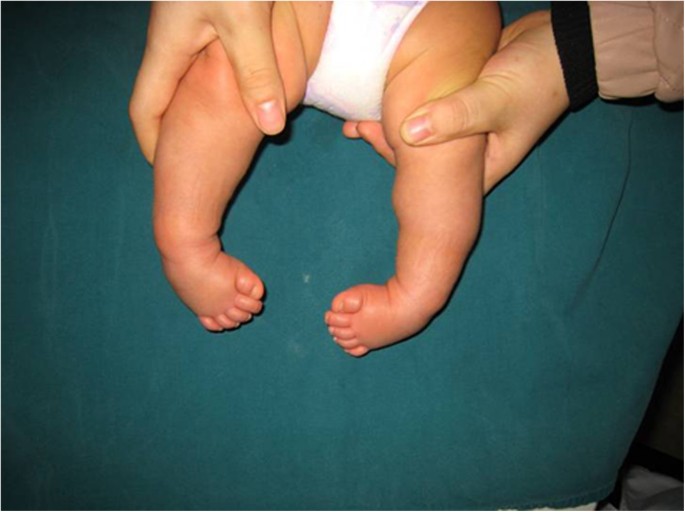



Manipulation And Brace Fixing For The Treatment Of Congenital Clubfoot In Newborns And Infants Bmc Musculoskeletal Disorders Full Text
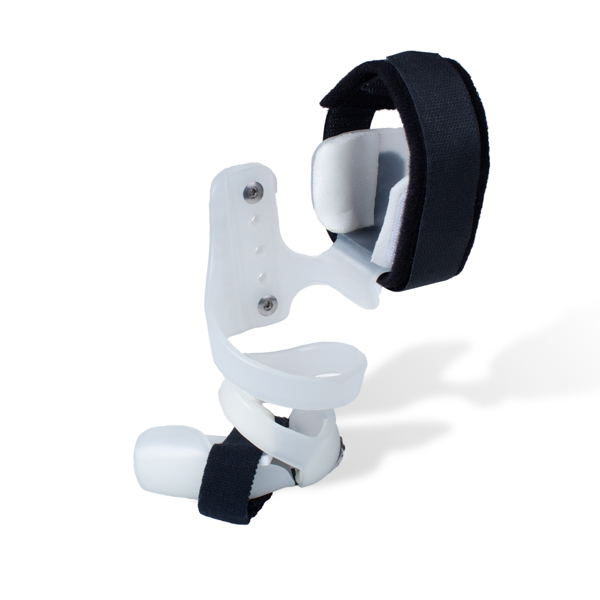



Club Foot Treatment Costs
The orthosis is worn 23 hours per day for three months and then during the nighttime until 5 years of age Failure to use the orthosis correctly may result in recurrence of the clubfoot deformity Good results have been demonstrated at multiple centers, and longterm results indicate that foot function is comparable with that of normal feetIn this study, surgeons at the Ponseti Center for Clubfoot Treatment at the University of Iowa focused on what happens to children after age four if and when the child loses correction of the clubfoot deformity Thirtynine (39) children with relapsing clubfoot were included in the studyCONCLUSIONS The age at first visit influenced the incidence of cast slippage, but otherwise did not affect the early treatment of clubfoot CLINICAL RELEVANCE The treatment of idiopathic clubfoot deformity should not be considered an orthopaedic emergency, and parents whose infants are born with this deformity should be counseled accordingly



Clubfoot Symptoms Stages Definition Description Demographics Causes And Symptoms Diagnosis



Clubfoot Orthoinfo os
Treatment for clubfoot Treatment for clubfoot usually begins two weeks after birth It involves using plaster casts to gradually put the foot back into its correct position The plaster casts are changed weekly for 68 weeks Babies then need to have a procedure to lengthen their Achilles tendons, followed by another plaster cast for 23 weeksClubfoot is one of the most common birth defects, affecting 0000 newborns each year Boys are more often affected than girls and in 50% of the cases the condition is bilateral, affecting both feet Only a small minority of the families has acces to proper treatment and the support they need to end the disability the clubfeet causes However, most of the clubfoot based review studies focused either the group of children with walking age or over the age of 10 years 45 , and hence the future studies should be focused with number of casts, percentages of surgical procedures, frequency and management of clubfoot relapses 46




Stretches For Club Foot Out Of Cast Pre Walking Age Club Foot Baby Club Foot Baby Club




Clubfoot Causes And Treatments
Foot imbalance due to clubfoot may be noticed during a fetal screening ultrasound as early as 12 weeks gestation, but the diagnosis of clubfoot is confirmed by physical exam at birth Clubfoot Treatment The treatment for clubfoot consists of two phases Ponseti serial casting and bracingThe treatment of clubfoot has evolved over time and can generally be divided into two main approaches Conservative and Surgical Approaches The goal of treating clubfoot remains the same whatever the approach to provide longterm correction of the deformity resulting in a foot that is fully functional and painfree 1Diagnosis Ponseti Method Surgery Recovery & Support Make an Appointment The vast majority of babies born with clubfoot, a condition that causes the bones and soft tissues of the foot to twist inward, are successfully treated by doctors at Hassenfeld Children's Hospital at NYU Langone using the Ponseti method



Clubfoot Orthoinfo os




Club Foot Symptoms And Treatment
No specific contraindications for surgery exist, though the child's size dictates that surgery is best performed at approximately age 6 monthsFoals with mild to moderate club feet with proper care have good outcomes Early treatment leads to a better prognosis Young horses treated before six months of age, have greatly higher success rates In severe cases, the prognosis remains guardedTreating Older Children with Clubfoot Introduction Clubfoot "Untreated" clubfoot is defined as a clubfoot that has had no treatment before walking age which is usually about 1 year Once a child starts walking on an untreated clubfoot, the lack of treatment leads to




Club Foot Nhs
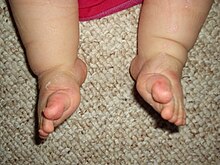



Clubfoot Wikipedia
Treatment will depend on your child's symptoms, age, and general health It will also depend on how severe the condition is The goal of treatment is to straighten the foot so that it can grow and develop more normally Without treatment, your child would have trouble walkingHow is clubfoot treated in a child? This study looks at 25 cases with clubfoot, 13 were children over 1 year of age with neglected clubfoot and 12 cases were children under one year of age with idiopathic clubfoot The results find that the Ponseti method delivers excellent correction of clubfoot without the associated risks and complications of major foot surgery




Clubfoot Talipes Treatment Management Approach Considerations Nonoperative Therapy Surgical Therapy
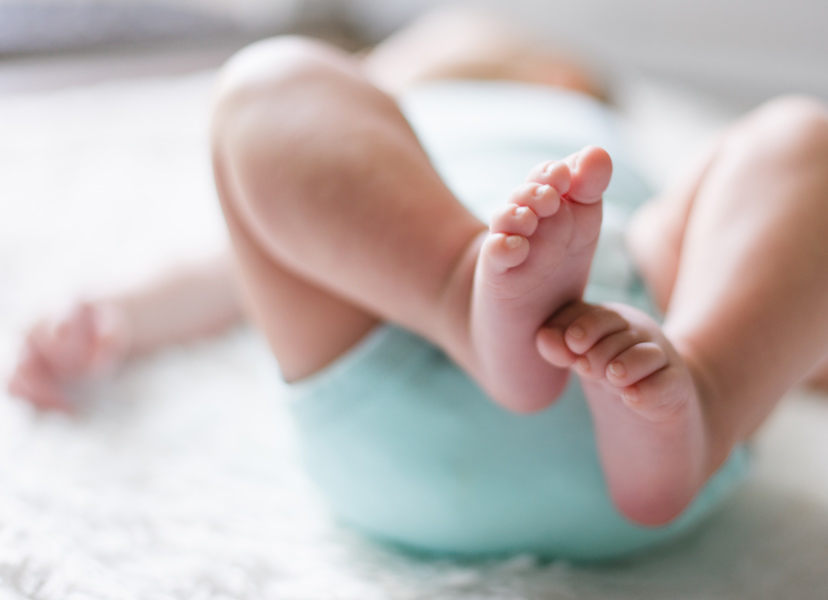



Club Foot Faqs
Club foot range between 35 o and minus 10 o These 2 angles are added to give the talocalcaneal index In a corrected foot it is more than 40 degrees Flat top talus can be demonstrated radiologically, if the talus is sufficiently calcified, but care is required for positioning of the footClubfoot bracing lasts for several years and is crucially important to your child's longterm mobility The brace maintains your child's foot in a corrected position From the end of the treatment stage until your child is 3 to 6 months old, they will wear the brace about 22 hours a dayClub foot or talipes equinovarus is the most common birth defect of the lower extremity, characterized by the foot turning both downward and inward The defect can range from mild to severe and the purpose of club foot repair is to provide the child with a functional foot that looks as normal as possible and that is painless, plantigrade, and flexible
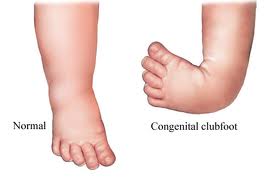



Introduction To Clubfoot Physiopedia
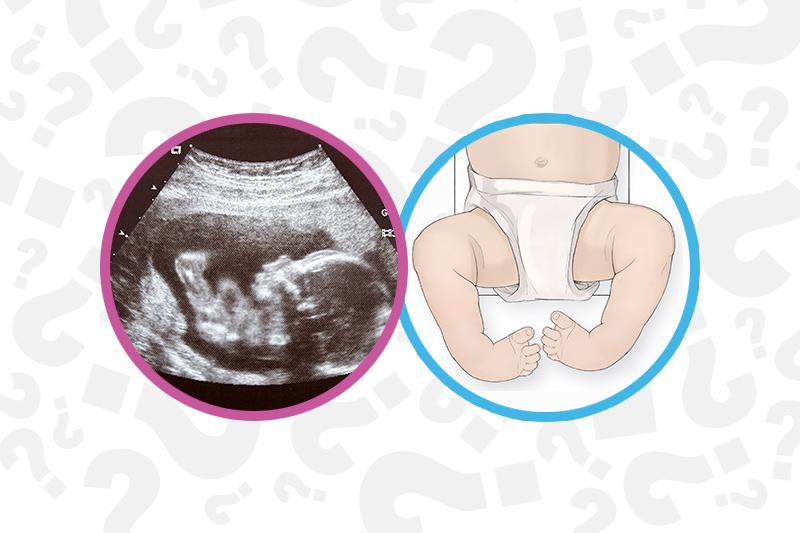



When Your Baby Has Clubfoot Answers For Expecting Parents Boston Children S Answers
Parents of infants born with clubfeet may be reassured that their baby, if otherwise normal, when treated by expert hands will have normal looking feet with normal function for all practical purposes The welltreated clubfoot is no handicap and is fully compatible with a normal, active life The majority can be treated in six to eight weeks using casts and gentle manipulationSurgical Treatment of Clubfoot If the manipulation/serial casting treatment fails, surgery may be necessary The surgical correction is usually not done until the child is between six and nine months of age Surgery is performed to correct clubfoot and align the foot in a more normal position The surgical procedure usually consists of releasing and lengthening the tight tendons/joint capsuleHow is clubfoot treated in a child?




Study Finds Ponseti Method Remains An Effective Treatment For Clubfoot Bracing Is Paramount




Functional Physiotherapy Method Results For The Treatment Of Idiopathic Clubfoot
Servative treatment within 2 weeks, surgery should be considered 3 Juvenile Presentation The most frequently recognized form of clubfoot in horses occurs in sucklings or weanlings at approximately 2 to 8 months of age1–3,6–8 It is commonly a unilateral condition but occasionally affects both limbs The first clinical sign recognized is an upClub Foot Treatment It is important to begin treatment early on, because the younger the child is, the easier it is to correct the problem This is because the foot is easier to shape Treatment is almost always nonoperative and surgery is only used as a last resort Casting for Club Foot Using the Ponseti method, the clubfoot is manipulated or stretched every five to seven days and the plaster casts are changedThis baby is on one of his last treatments for his clubfeet and will then wear a brace for a few years An alternative to serial casting is a specialized physical therapy treatment program, in which your child undergoes daily




Starship Resources For Children Coming To The Orthopaedic Clinic For Clubfoot




Clubfoot And Other Foot Defects Children S Health Issues Msd Manual Consumer Version
Clubfoot Treatment Program Lurie Children's offers a comprehensive and multidisciplinary program for clubfoot, a congenital condition that can affect one or both feet in newborns Our dedicated team of orthopedic, sports medicine and orthotics specialists have created a coordinated, familycentered approach to clubfoot careA femoralcruropodal plaster device in a position of maximum correction, changed every two weeks, for Club foot can be mild or severe It can be treated successfully without surgery but in some severe cases, surgery is required Club foot is the most common birth defect affecting the legs as it occurs in 1 to 4 of every 1,000 live births especially in firstborn children and males Cause of Club foot The causes of club foot is unknown
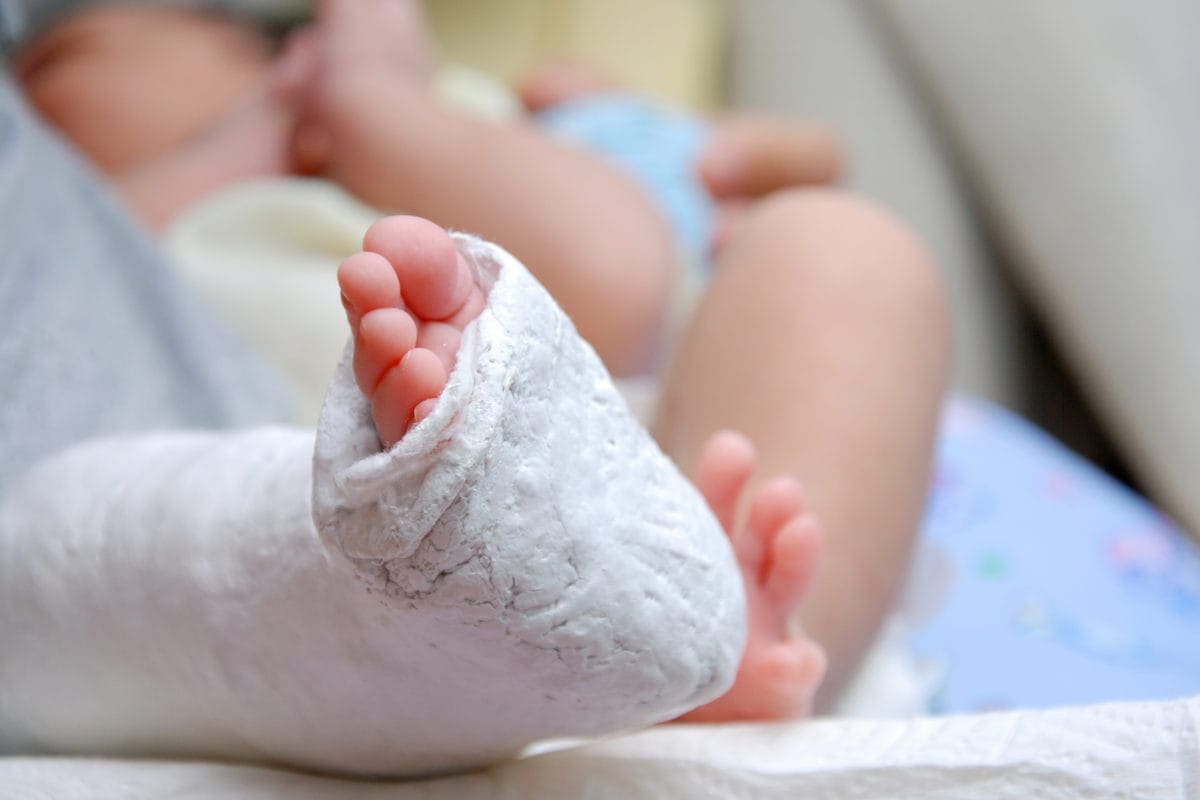



What Is Clubfoot Symptoms And Treatment Familydoctor Org




Surgical Algorithm According To Age Groups Download Table
This is common when your child is 23 years old but may continue up to age 7 Surgical Treatment Sometimes stretching, casting, and bracing are not enough to correct your baby's clubfoot and surgery is needed to adjust the tendons, ligaments, and joints in the foot and ankle This usually is done when your child is 612 months oldThe brace is worn full time (24 hours a day, except for bathing) for 3 months, after which it will be worn only at naps and nighttime until the child is 3 years of age Following full correction of the clubfoot, clinic visits will be scheduled every 36 months for 2 years, and then less frequently Correction of neglected idiopathic club foot by the Ponseti method The Journal of Bone and Joint Surgery British volume, (3), 371 17 patients ages 19 to 9 years of age 16/17 corrected, mean time in casts 3 The surgical treatment of clubfoot in the adult is complicated, and the type of surgery and even the need for surgery, is
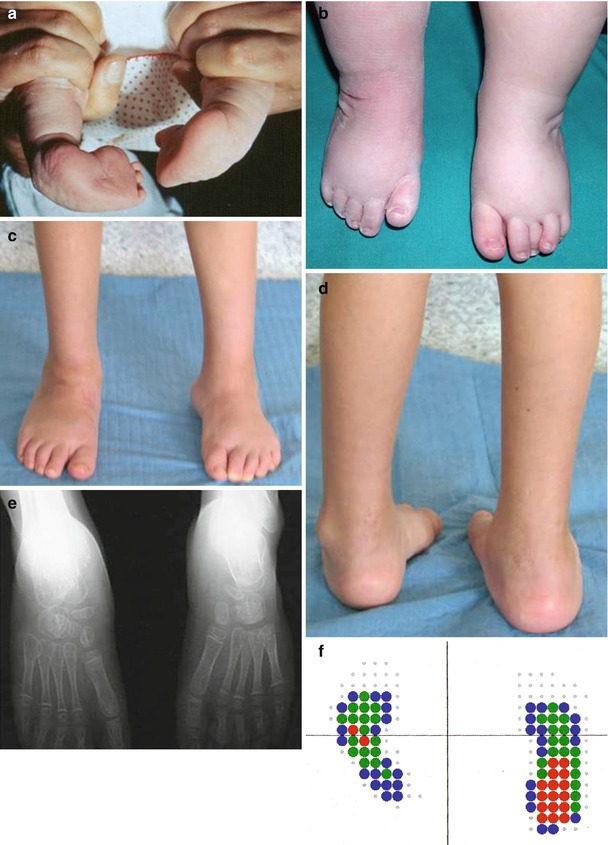



Management Of Clubfoot Springerlink



Club Foot Dr Deepak Khurana Paediatric Orthopaedic Surgeon
Congenital clubfoot (CC) is a complex deformity Conservative treatment, involving serial cast changes, is a consensus in the literature, with the Ponseti method considered to be the first choice However, this method is described for children younger than walking age, ie, with diagnosis and treatment starting at birthMethods From 03 to 05 we treated 31 feet of 27 patients with clubfoot with a mean age of 21 months (1272 months) with the Ponseti method Average follow up was 42 months All of the patients were evaluated before and after treatment for Dimeglio scores Patients in the first group, aged less than months, were compared with those in the Immediately having casts with the bar inbetween my legs I was treated until I was three Then came the years of the ugly brown man looking shoes At the age of around 8 or 9 my left foot had surgery to release my Achilles tendon Wearing the corrective shoes until I was eighteen my feet became completely corrected




Clubfoot Congenital Talipes Equinovarus Narayana Health
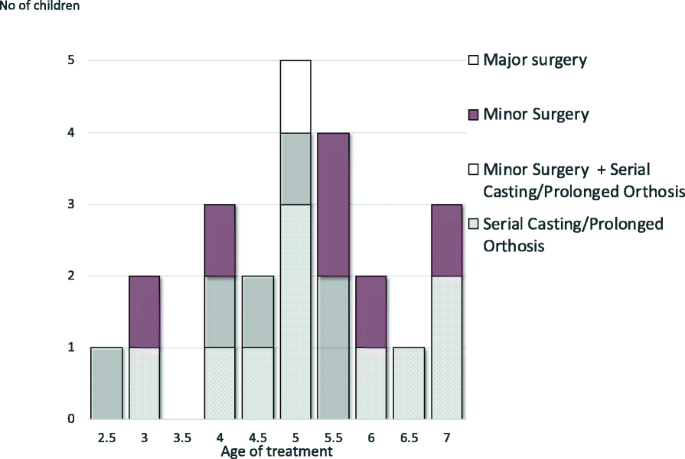



Development Of Foot Length In Children With Congenital Clubfoot Up To 7 Years Of Age A Prospective Follow Up Study Bmc Musculoskeletal Disorders Full Text




A F A This 31 Month Old Child Presented With A Left Clubfoot Download Scientific Diagram




Clubfoot Congenital Equinovarus Cev Team Bone



Clubfoot Orthoinfo os




Club Foot Nhs




Foot Deformities Concise Medical Knowledge
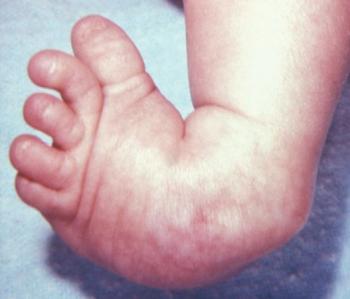



Clubfoot Causes And Treatments




Treatment Of Congenital Clubfoot Using Ponseti Method Sciencedirect




Clinical Photographs Showing A The Club Feet Of A 1 5 Month Old Baby Download Scientific Diagram




Clubfoot Wikipedia



2




To Parents Of Children Born With Clubfeet University Of Iowa Stead Family Children S Hospital




Ponseti Method Is Superior To Surgical Treatment In Clubfoot Long Term Randomized Prospective Trial Sciencedirect
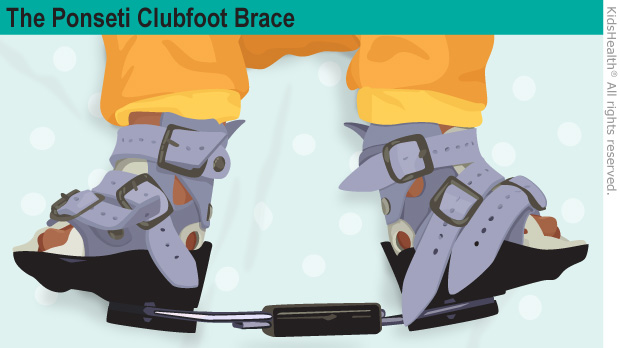



The Ponseti Method Bracing Phase For Parents Nemours Kidshealth



Club Foot




Timing For Ponseti Clubfoot Management Does The Age Matter 90 Children 131 Feet With A Mean Follow Up Of 5 Years Abstract Europe Pmc




Clubfoot Talipes Treatment Management Approach Considerations Nonoperative Therapy Surgical Therapy




To Parents Of Children Born With Clubfeet University Of Iowa Stead Family Children S Hospital




Clubfoot Treatment With A Boots And Bar Orthosis




Age At Identifi Cation Of Residual And Relapsed Clubfoot Compared With Download Scientific Diagram



1



1




Pdf Congenital Idiopathic Talipes Equinovarus Before And After Walking Age Observations And Strategy Of Treatment From A Series Of Cases Semantic Scholar




Clubfoot Orthopaedia
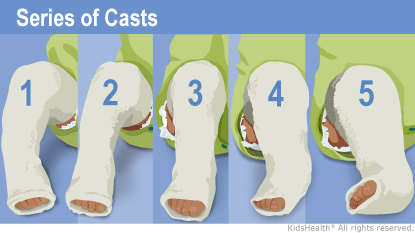



The Ponseti Method Casting Phase For Parents Nemours Kidshealth




Global Clubfoot Initiative Publicising Clubfoot Treatment Worldwide
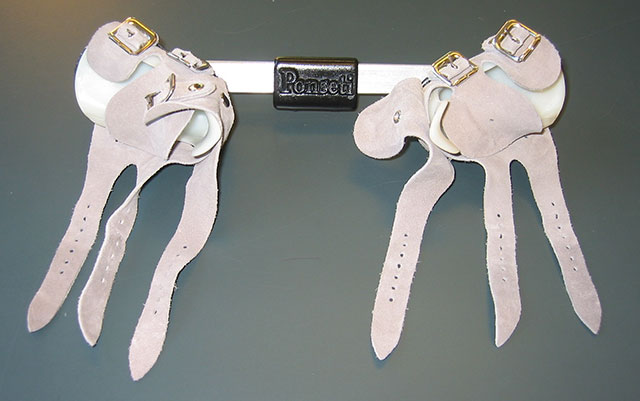



Clubfoot Johns Hopkins Medicine



Clubfoot Orthoinfo os
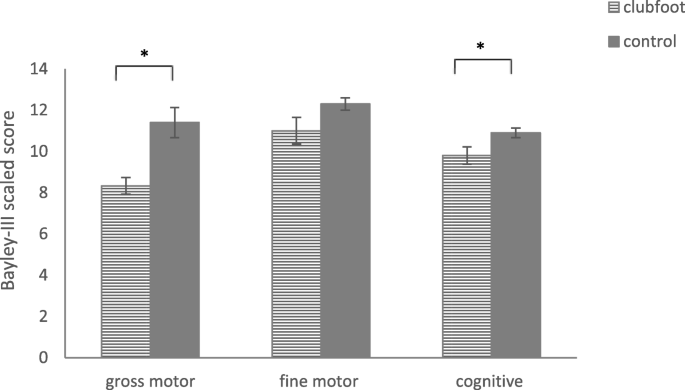



Motor And Cognitive Functioning In Children Treated For Idiopathic Clubfoot At The Age Of 3 Years Bmc Pediatrics Full Text



2




Ponseti Treatment Works In Walking Age Kids With Residual Clubfoot Deformity Orthobuzz




Jaypeedigital Ebook Reader




Clubfoot Causes And Treatments
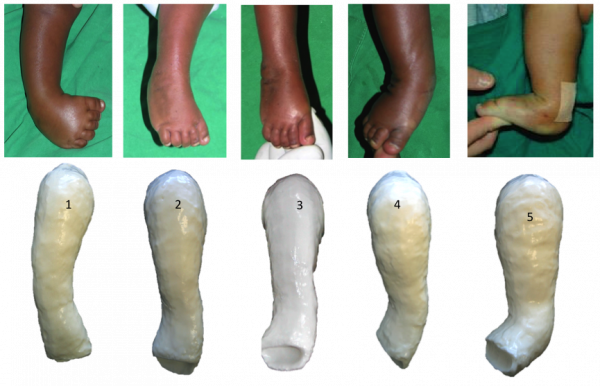



Ponseti Method Physiopedia




Figure 2 From Midterm Results Of The Ponseti Method In The Treatment Of Congenital Clubfoot Semantic Scholar




Clubfoot Congenital Talipes Equinovarus Pediatrics Orthobullets




Children Free Full Text Surgical Treatment Of Clubfoot In Children With Moebius Syndrome Html




Clubfoot In Children Lurie Children S
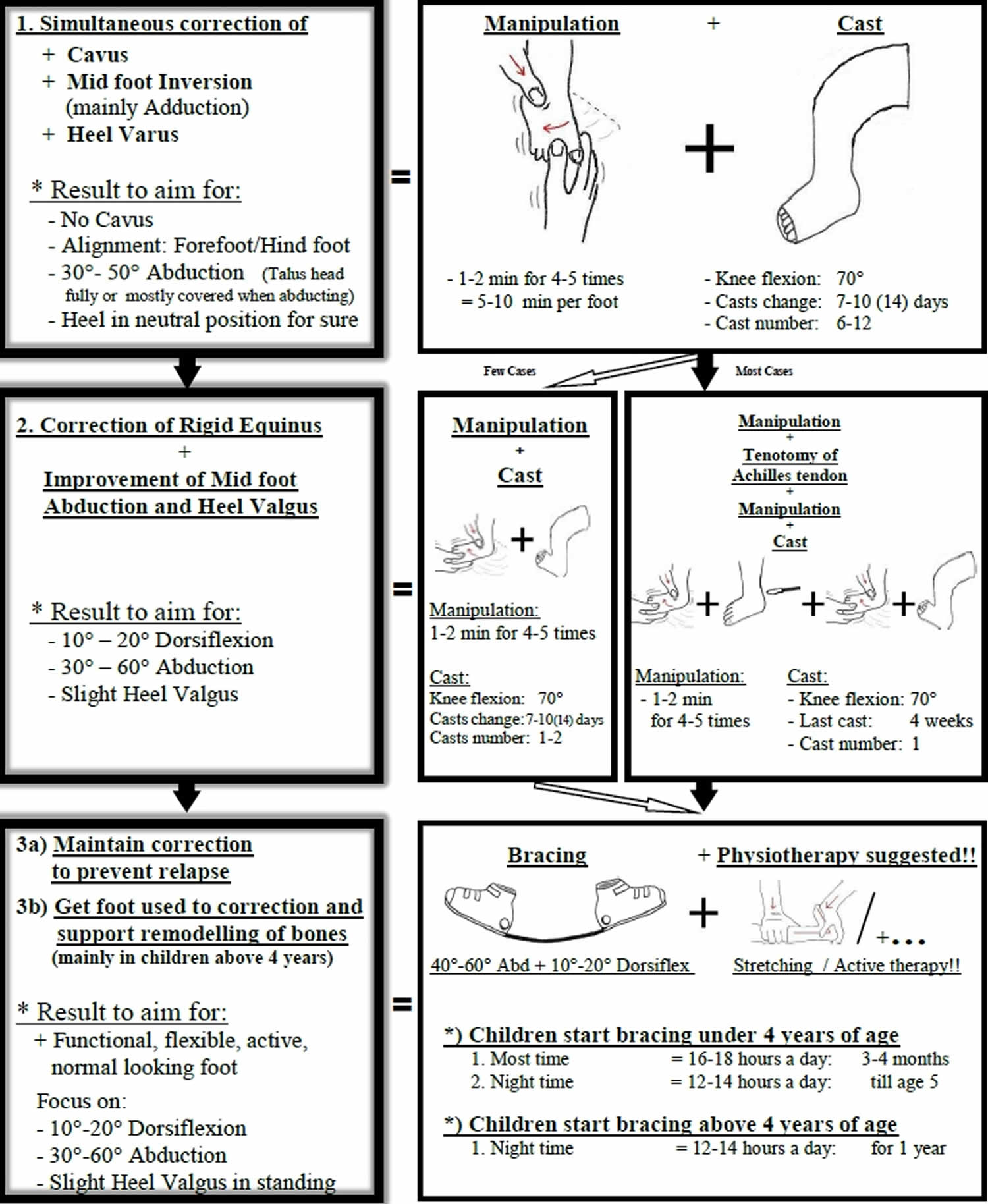



Ponseti Method For Clubfoot Treatment




Pdf Congenital Idiopathic Talipes Equinovarus Before And After Walking Age Observations And Strategy Of Treatment From A Series Of Cases Semantic Scholar
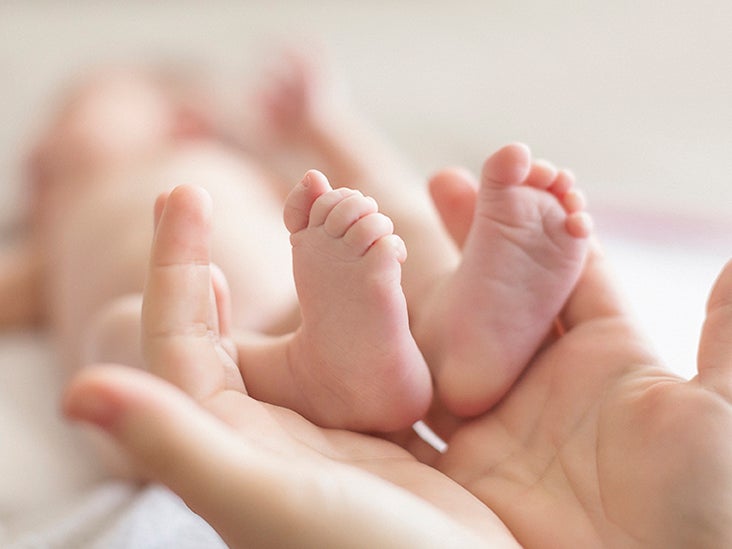



Clubfoot Repair Treatments Procedure Outlook




Talipes Babycentre Uk




To Parents Of Children Born With Clubfeet University Of Iowa Stead Family Children S Hospital
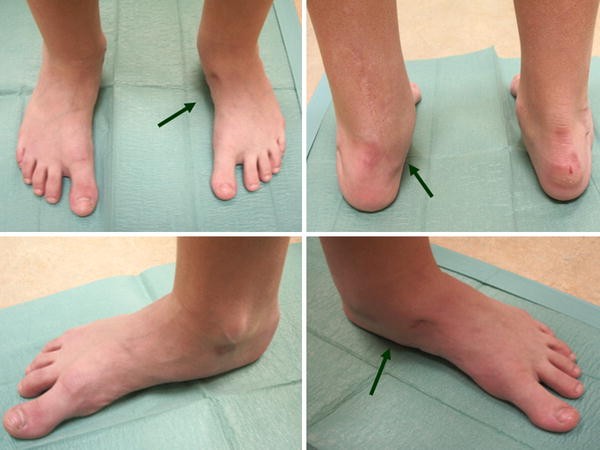



Relapsed Clubfoot Correction With Soft Tissue Release And Selective Application Of Ilizarov Technique Springerlink
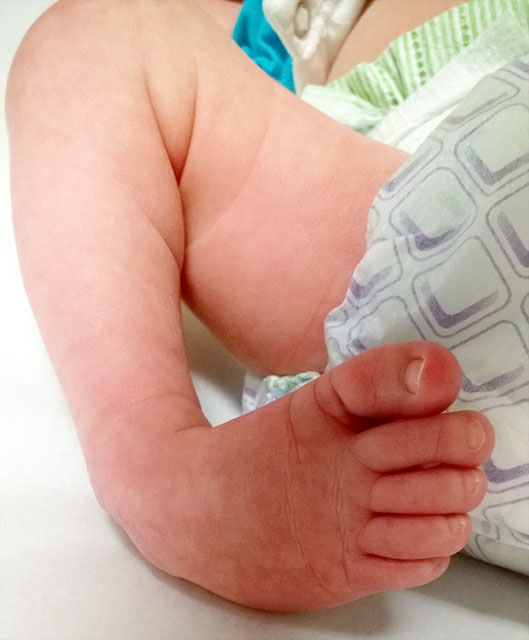



Clubfoot Johns Hopkins Medicine




Clubfoot Solutions Very Important Piece Of Literature Supporting The Ponseti Method For Older Children In Low Resource Counties Many Families Clubfoot Children Are Not Treated Until After Walking Age Because Of



Clubfoot Orthoinfo os
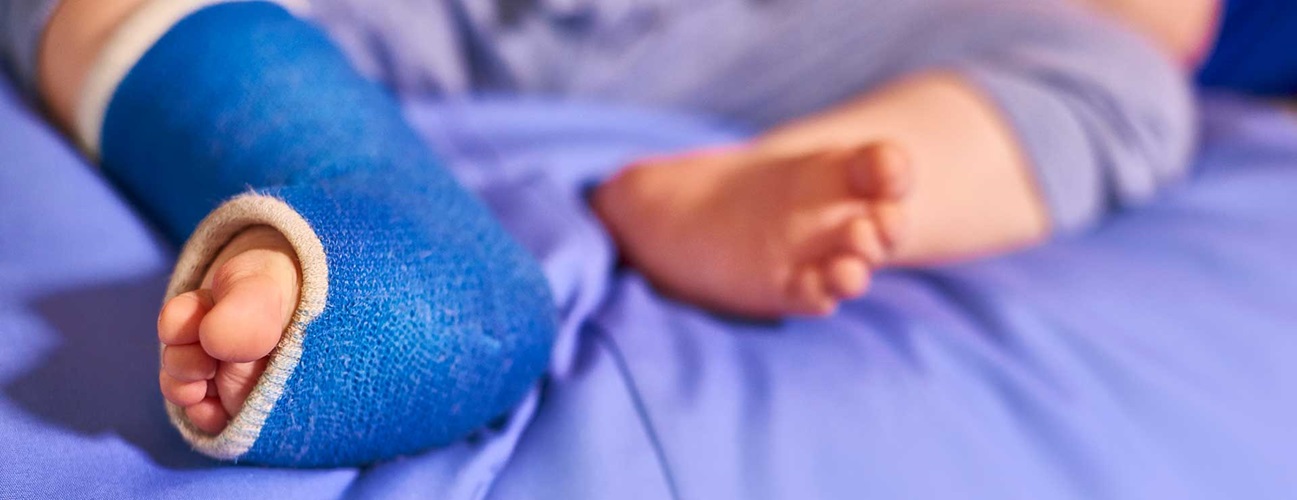



Clubfoot Johns Hopkins Medicine
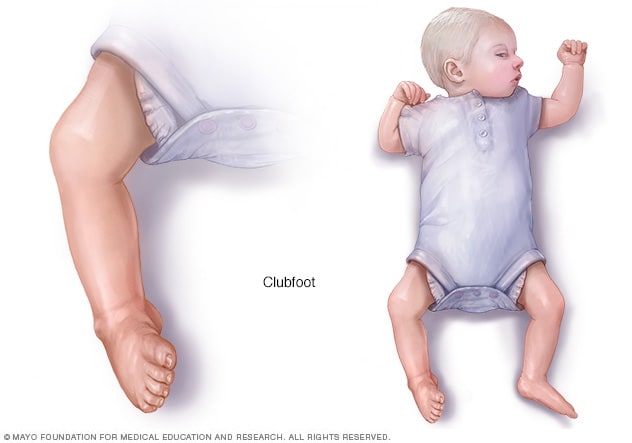



Clubfoot Symptoms And Causes Mayo Clinic




Children Free Full Text Ponseti Technique For The Management Of Congenital Talipes Equinovarus In A Rural Set Up In India Experience Of 356 Patients Html



3
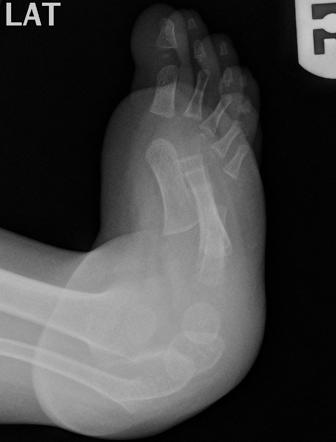



Clubfoot Congenital Talipes Equinovarus Pediatrics Orthobullets




Clubfoot And Other Foot Defects Children S Health Issues Msd Manual Consumer Version
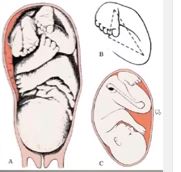



Introduction To Clubfoot Physiopedia




Functional Physiotherapy Method Results For The Treatment Of Idiopathic Clubfoot




Clubfoot Wikipedia




Flowchart Of Patients With Idiopathic Clubfoot Download Scientific Diagram
/GettyImages-531856195-56c202e25f9b5829f867c91e.jpg)



Learn About Clubfoot Deformity In Newborns




A Practical Manual Of The Treatment Of Club Foot December 9 1868 There Has Been No Disagree Able Result From The Force Employed The Boywalks Very Well In The Ball And Socket Shoe Thefeet Are Very Nearly




To Parents Of Children Born With Clubfeet University Of Iowa Stead Family Children S Hospital




Clubfoot Causes Symptoms And Diagnosis
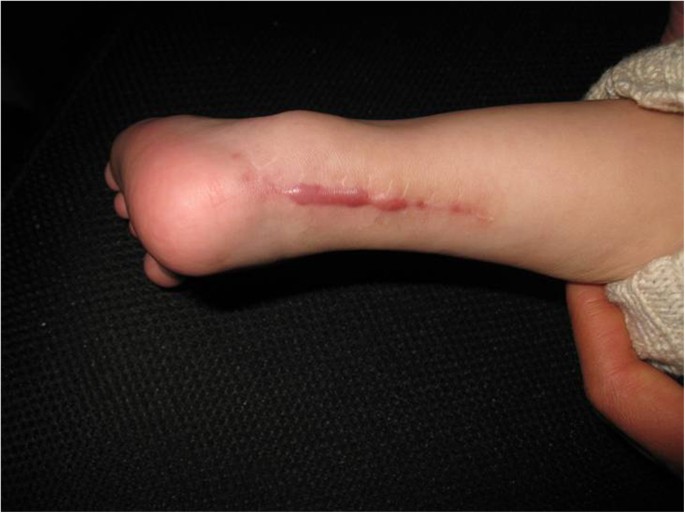



Manipulation And Brace Fixing For The Treatment Of Congenital Clubfoot In Newborns And Infants Bmc Musculoskeletal Disorders Full Text
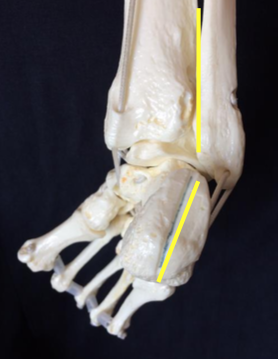



Introduction To Clubfoot Physiopedia




Functional Physiotherapy Method Results For The Treatment Of Idiopathic Clubfoot




Club Foot Faqs




Treatment Options For Clubfoot An Update Pediatric Health
/GettyImages-976611000-781e705fad0e43aca41e5f5fc82f7b7e.jpg)



Learn About Clubfoot Deformity In Newborns
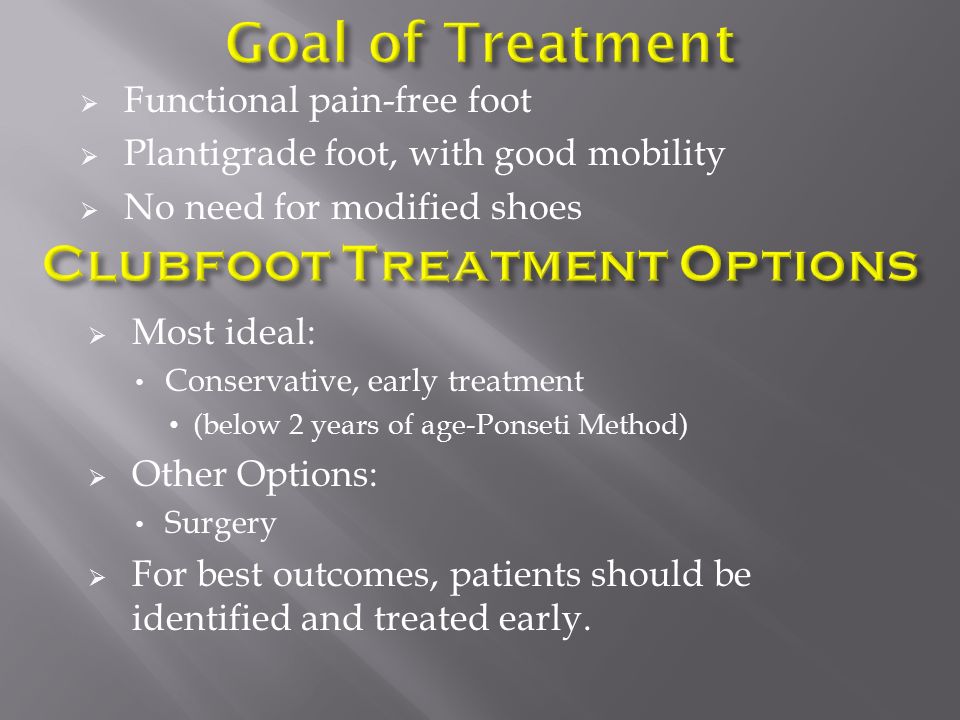



Management Of Neglected Club Foot Ppt Video Online Download




A Polyaxial Fixation Brace For The Treatment Of Idiopathic Congenital Talipes Equinovarus In Newborns Journal Of Orthopaedic Surgery And Research Full Text




A Practical Manual Of The Treatment Of Club Foot C M September 1870 Aged Seventeen Days Being Satisfied That Deformity Was Of Paralyticorigin I Dressed Them With Neils Foot Board Asdescribed Page 39




A E A A Child With Bilateral Clubfeet With Previous Nonoperative Download Scientific Diagram




Pdf Risk Factors In The Relapse Of Club Foot Treated By Ponseti Method Semantic Scholar




Medicowesome Club Foot Age Wise Management Flowchart




Nhs 111 Wales Health A Z Club Foot




Before Going To Doctor Which Must Know About Clubfoot Rxharun




Functional Physiotherapy Method Results For The Treatment Of Idiopathic Clubfoot
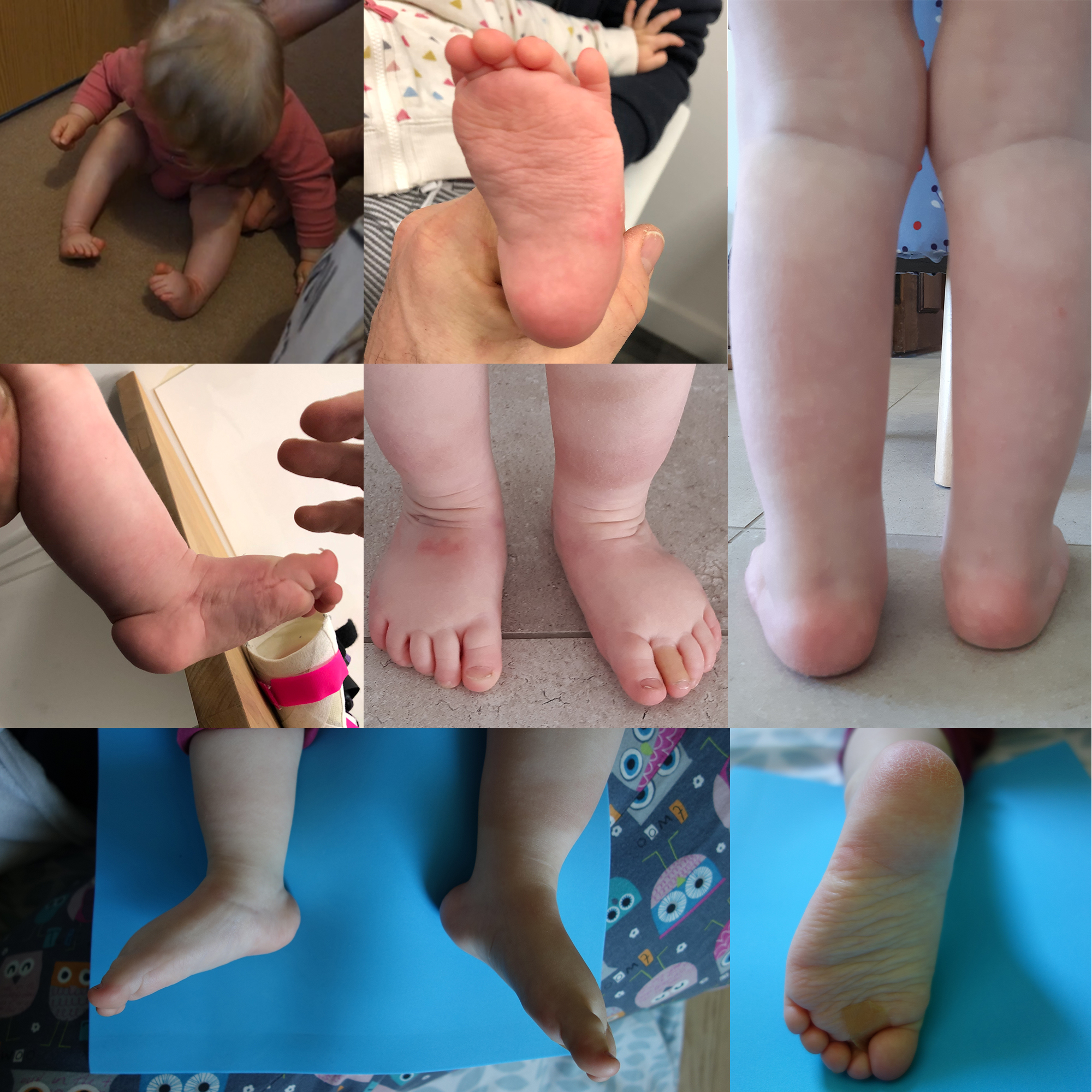



Club Foot Faqs
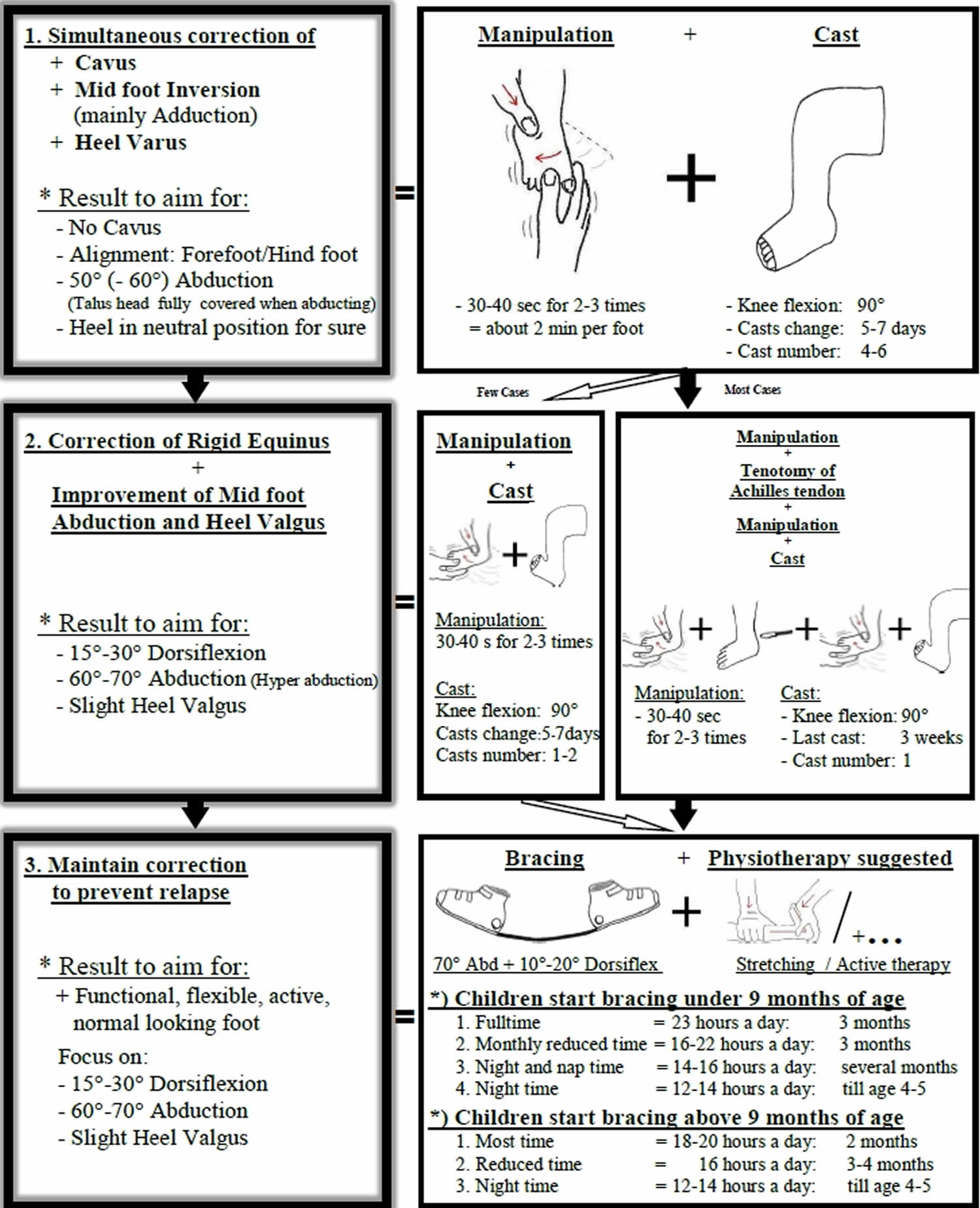



Ponseti Method For Clubfoot Treatment




Relapses In Clubfoot Treated With Ponseti Technique And Standard Bracing Protocol A Systematic Analysis Journal Of Clinical Orthopaedics Trauma



コメント
コメントを投稿